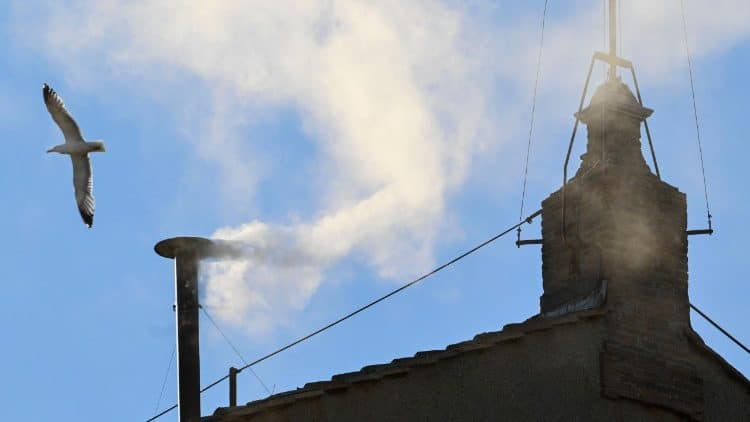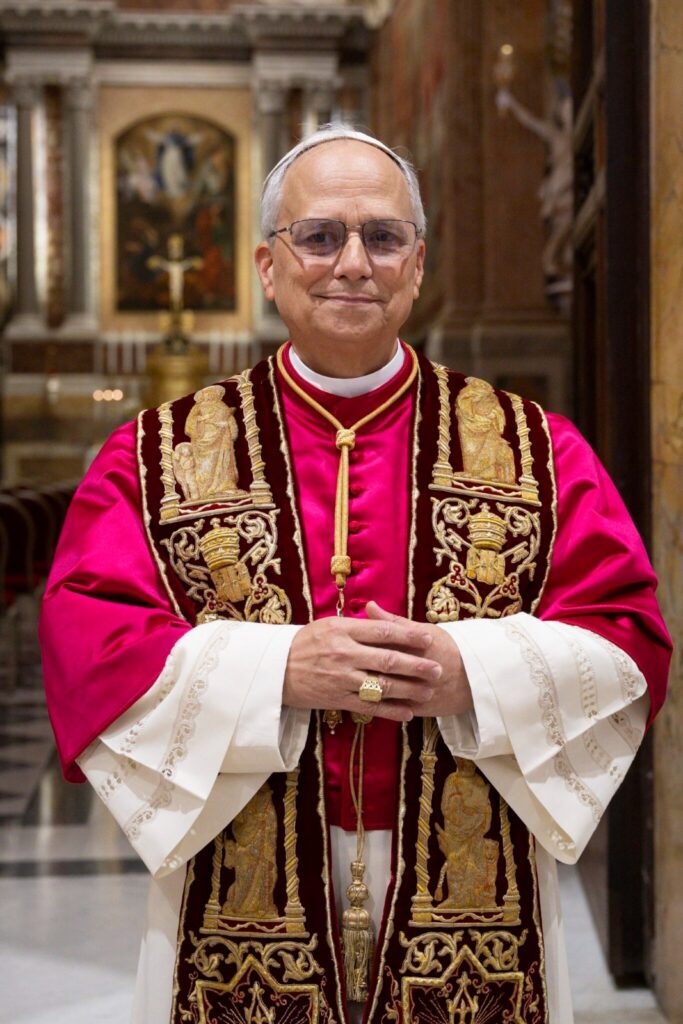The Language of the Fumata: An Eternal Symbol of Hope and Unity
Smoke: An Eternal Symbol in the Church

Since the earliest centuries of Christianity, smoke has played a central role in the life of the Church. One need only attend a solemn Mass to observe how the incense rises to heaven, carrying with it the prayers of the faithful, like a whisper that reaches the divine. This ethereal and mysterious smoke symbolizes the intangible, the spiritual; that which we cannot touch, but can feel. It is a silent language that communicates the profound without the need for words.
But of all the manifestations of smoke in the Catholic tradition, none is as recognizable and anticipated as the fumata of the conclave. This signal, so simple yet so powerful, manages to stop the world’s pulse for an instant. Without uttering a single word, it communicates a message that crosses borders: either there is a Pope, or there isn’t.
Curiously, this symbol of just a few seconds has endured over time and has become one of the most iconic moments of the Catholic Church. During every papal election, St. Peter’s Square fills with thousands of people: pilgrims, tourists, journalists… All with their eyes fixed on a small chimney. And when the smoke begins to rise, hearts stop for a moment. It doesn’t matter if you’re there in person or watching the event from the other side of the world, that small column of smoke achieves the unthinkable: uniting millions in a shared feeling.
The Smoke as a Universal Language
Few signs on the planet are as universal as that small column of smoke emerging from the chimney of the Sistine Chapel. When the smoke begins to rise, millions of people in every corner of the world look up—or fix their eyes on their screens—to discover whether the color is black or white. And here’s the curious detail: in a world plagued by nuances and overinterpretations, the language of the smoke is as simple and forceful as a “yes” or a “no.” It brooks no arguments, no double readings. It’s either black or white. Period.
And perhaps that’s where its power lies: in its simplicity. It doesn’t need words, speeches, or announcements. It’s the only language that, without a word, is capable of communicating a transcendental change in the Church. And it does so in an almost artisanal way, in the 21st century, where digital and immediate things dominate our lives. Which, by the way, brings us to the next point…
What’s behind the fumata?
The magic of the fumata isn’t as improvised as it might seem. Since the 1914 conclave, specific chemicals have been used to ensure the clarity of the color. Gone are the days of “gray smoke” that left the square in a sea of uncertainty. Today, the Vatican ensures that the message is clear: either there is a Pope, or there isn’t. Technology hasn’t replaced tradition, though: smoke still rises from the burned ballots, combined with those little chemical secrets of the Vatican. And, let’s face it, it’s the only time a combustion failure can make global headlines.
The system is reinforced by a bell and an announcement on the central balcony. But the smoke remains the main protagonist. Perhaps because its language is universal and direct. In those seconds when the smoke rises, the entire planet holds its breath.
A moment of global silence
When smoke begins to rise from the chimney, the world stops. It’s an almost magical moment: millions of people, regardless of their language or culture, look toward the same place, waiting for an answer that will change the course of the Church. It’s as if the entire planet holds its breath, waiting for the silent announcement of a small wisp of smoke. In an age where information is consumed in seconds and forgotten in minutes, the fumata achieves the impossible: capturing global attention with a simple gesture.
Furthermore, it is one of the few moments when the media becomes truly global. No matter the channel or the language; all eyes are on that small chimney, while cameras search for the best angle to capture that moment. Even social media, for a few minutes, put aside their disputes to share the image of the smoke rising into the sky.
The White Smoke: A Symbol of Unity and Hope
And then it happens: the white smoke. At that moment, the bells ring, people clap and hug, even strangers. It’s a symbol of unity, a reminder that gestures still exist that can unite millions in a shared feeling. Because, in the end, the white smoke is more than an announcement. It’s a message of hope for a world that, although divided in many ways, can still unite to look to the sky for a sign.
That column of white smoke, simple and humble, reminds the world that there are still moments capable of uniting us. That amidst the maelstrom of information, political divisions, and cultural differences, the smoke emerging from the Sistine Chapel still manages to elicit collective applause.
What will this conclave have in store for us? Within a few days or hours, the answer arrived, not in a press release, but in a humble and powerful language of smoke, one that needs no interpreters, because its greatness lies in its simplicity.
Related

What a company gains when incorporating feminine genius into leadership
Alejandro Fontana
13 May, 2025
4 min

Leo XIV: The Missionary Pope Who Inspires a New Era of Evangelization
Exaudi Staff
13 May, 2025
4 min

Feelings, feelings
Francisco Bobadilla
12 May, 2025
4 min

Mary’s Motherly Heart
José María Montiu de Nuix
12 May, 2025
4 min
 (EN)
(EN)
 (ES)
(ES)
 (IT)
(IT)

